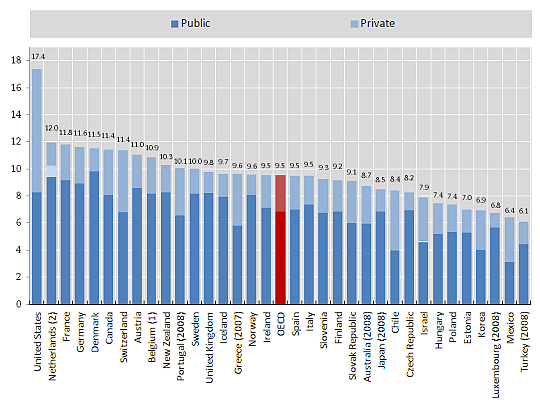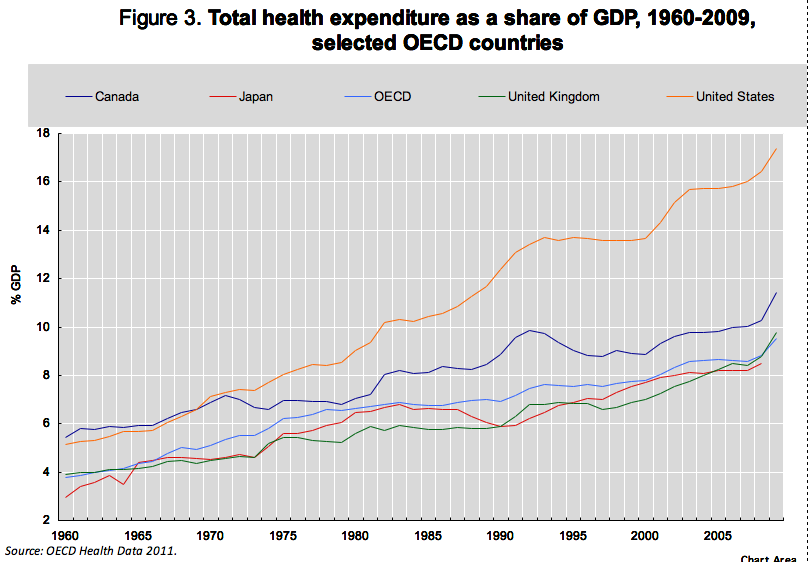In a previous post, I discussed how the soaring cost of healthcare in the US is the biggest reason for the long-term fiscal problems that the country faces. The Wall Street Journal has a front page story today that gives a perfect illustration of what is wrong with the system.
Outside of heart attacks, doctors are often too quick to use a common $20,000 procedure to treat patients suffering from coronary artery disease, a new study suggests.
About 600,000 angioplasty procedures, which almost always involve placement of a tiny metal tube called a stent, are done in the U.S. each year. Roughly 70% of these procedures are performed on patients suffering symptoms of a heart attack and aren’t medically controversial. But the remainder are done on stable patients who are suffering mild symptoms or no symptoms at all…
The results, published in the Journal of the American Medical Association Tuesday, come amid rising concern about the overuse of big ticket medical technology. Such concerns are rising not only in cardiology, but in other major specialties as state and federal governments and health insurers seek to contain health-care costs.
Thanks to millions of unnecessary procedures like this performed every year (plus more. does every kid really need braces?), massive administrative inefficiencies (my doctor and dentist’s office still aren’t computerized and have paper records), and higher costs associated with the risk of malpractice lawsuits, the US spends twice as much on healthcare as Australia. You can see from the chart below (see here for more OECD data) that its healthcare costs tower over every other OECD country. And amazingly, the US manages to spend this much while leaving around 50 million people uninsured.
 Furthermore, and this is the frightening part, US healthcare costs are rising faster than anywhere else.
Furthermore, and this is the frightening part, US healthcare costs are rising faster than anywhere else. This is obviously a completely unsustainable state of affairs. The US problem partly reflects huge inefficiencies in the way the healthcare system is set up over here, which I won’t get into today.
But as Q Continuum noted in his recent post, this is a problem afflicting all modern welfare states, particularly as our populations get older. Ultimately, we are going to have to make some tough choices in order to get the growth in healthcare spending under control. A few quick thoughts and questions to ponder, perhaps for further debate in the comments:
- Around 80% of healthcare costs are said to be caused by five fairly predictable behavioural issues: smoking, alcohol, poor diet, too much stress, and insufficient exercise. Should insurers be allowed to charge higher premiums to individuals who make some of these lifestyle choices? Should the state have to foot the bill for the treatment of modern diseases like obesity and diabetes (type 2) that in some cases result from poor lifestyle choices?
- How can we incentivise doctors to look at dietary changes and other alternative treatments rather than prescribing expensive drugs for every single affliction?
- 27 million Americans are said to be on antidepressant drugs, which are rapidly replacing traditional therapy as treatment for depression, anxiety, etc. Is this a healthy trend?
Please note that I am not making light of any of the illnesses mentioned above. I just think these are a few issues worth thinking about.
Enough for today.
